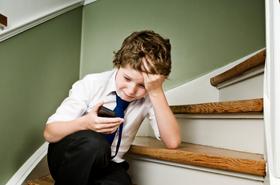The teen suicide rate in the United States has tripled since the 1960s. Suicide is currently the third leading cause of death among adolescents, and the second leading cause of death among college students. Although suicide is highly preventable, with clearly identifiable warning signs, it continues to occur in many communities across the nation. In fact, in February and March 2014, ten New York City public school children took their own lives.
The Numbers
According to the Centers for Disease Control, each year, approximately 4,600 youth between the ages of 10 and 24 take their own lives. The vast majority of suicides are carried out via firearm or suffocation. However, it isn’t just deaths by suicide that are part of the issue. Nearly one-fourth of American high school students report thinking seriously about suicide, 13 percent report having a plan, and 8 percent report having actually attempted suicide in the last 12 months. That translates to well over 150,000 emergency room visits by children who have injured themselves as part of an attempt at taking their own life.
This video was created to promote the prevention and awareness of teen suicide.
It is well documented that boys are much more likely to die as a result of suicide. However, girls are much more likely to attempt taking their own life. In addition to these gender differences, ethnic and cultural differences also exist. Among minority groups, Alaskan Native and Native American groups experience the highest rates of suicide. Hispanics are also at greater risk of suicide than are black and white youth.
Further compounding the problem is the immense stigma associated with suicide and suicidal ideation. Oftentimes the underlying issue driving someone to contemplate suicide – depression and other mental illnesses, family troubles, alcohol or drug use, abuse or violence in the home, or harassment and bullying by one’s peers – is also highly stigmatized. As a result, youth who attempt suicide are often blamed for their actions and their families scrutinized. This isolation, combined with the general unwillingness of communities to talk openly about suicide and it’s underlying causes, leads to further feelings of isolation by those who have attempted suicide or have thought about suicide.
Positive Changes
In response to this epidemic, school districts, communities, state governments and private and public agencies are working to devise strategies that reduce the incidence of teen suicide and suicidal ideation. Many school-based programs seek to open lines of communication about suicide and the problems that often fuel suicidal thoughts. In so doing, schools help reduce the aforementioned stigma and blame, and allow youth to express their feelings and feel comfortable seeking help when they need it.
In teenagers, suicide is the second most common cause of death. In this video, Kathleen Gilligan, a mother who lost her son to suicide, and Dr. Molly Adrian, share their tips for recognizing warning signs and preventing suicide in children and teens.
Additionally, many programs seek to inform kids and school personnel about the warning signs of suicide. The Signs of Suicide Prevention Program is recognized by the Substance Abuse and Mental Health Administration as the only school-based prevention program that addresses underlying risk factors for suicide while also reducing rates of suicide. The program is specifically designed for middle school and high school students and teaches them about common suicidal symptoms and warning signs in themselves and their peers. The basis of the program is the development of peer intervention strategies, because studies indicate that adolescents are most likely to turn to a friend if they are considering suicide. Schools that have implemented this program have seen a 40 percent reduction in the number of reported suicide attempts.
In 2010, New Jersey passed one of the nation’s toughest anti-bullying laws, the Anti-Bullying Bill of Rights Act, in response to a rash of student suicides throughout the state. Recognizing that harassment, intimidation and bullying are primary causes of suicidal ideation, the state clearly defined prohibited acts that interfere with the rights of other students. Not only does the law apply to incidents on school grounds, it also applies to off-site school-sponsored events, on school busses and off school grounds as well. In short, a student who bullies another student at any time, in any forum, be it in person or online, can be punished by the school district for his or her actions.
This positive music video, created by Mayo Clinic, encourages troubled teens to communicate with an adult for help and support. It also depicts how teens can talk to adults in a variety of situations. Things can get better.
A further component of the New Jersey law is mandatory bi-annual reporting of harassment, intimidation and bullying incidents in each district. Using this data, the state grades each district and provides the grade to the general public. Schools that perform poorly face sanctions and are required to revise anti-bullying plans in order to have a more positive effect on the overall culture and climate of the school.
Although the vast majority of child and adolescent suicides occur off-campus, public schools are trying to do everything they can in order to inform students about suicide and suicide risk, provide intervention and prevention strategies aimed at helping reduce the incidence of suicide and suicidal ideation, and develop strategies for holding students accountable for actions that cause their peers to contemplate taking their own life, or worse, actually following through. Improving understanding and empathy among students, arming teachers and school personnel with knowledge and tools, and informing parents and other stakeholders about suicide and suicide risk will help quell suicide rates and create a more compassionate and caring school environment for all students.
Questions? Contact us on Facebook. @publicschoolreview











